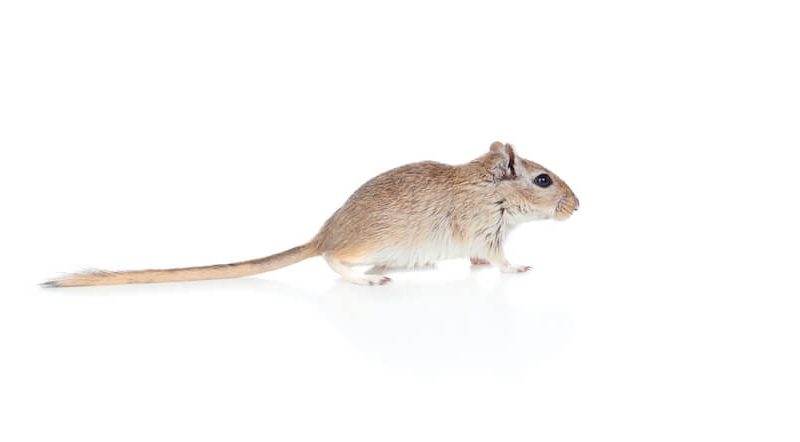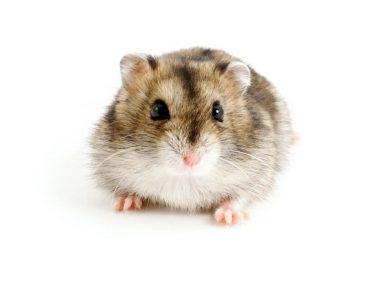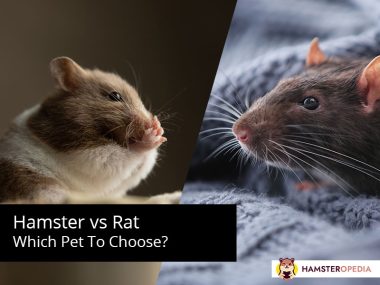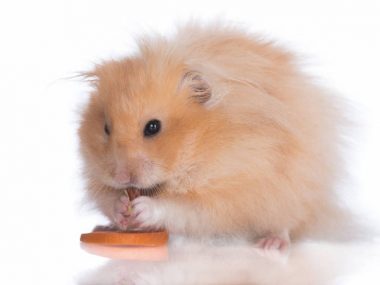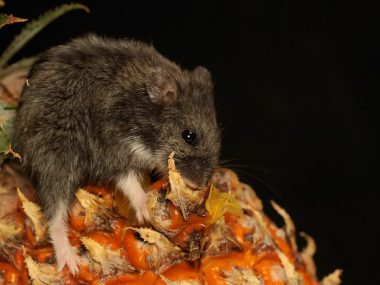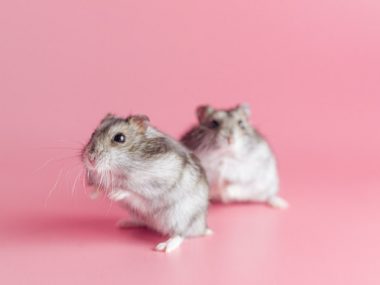Aren’t gerbils and hamsters pretty much the same thing? You may be surprised to find out one is like a bright ray of sunshine while the other just goes with the flow! We have some riveting details to shed light on both species and a detailed gerbil vs hamster comparison for you.
Table of Contents
What Is A Gerbil?
A gerbil is a relative of the hamster, of which both belong to the Rodentia order. There are numerous species of gerbils. However, the most common pet gerbil species is the Mongolian gerbil (Meriones unguiculatus.) Gerbils are one of the most common pets you’ll find in pet stores alongside hamsters.
Some gerbils are also referred to as a “jird.” Jirds are long-tailed gerbils who are often wild, living in the deserts of Mongolia, northeast China, Africa, and the Middle East. Gerbils make up the largest population of all rodents.
How Are Gerbils Different From Hamsters?
It can be easy to mistake a gerbil for a dwarf hamster. The average person most likely doesn’t know how to tell them apart. In fact, gerbils and hamsters are often mistaken for a mouse! So, how do you know which is which?
Gerbils have a more slim physique with narrow heads. Their tails are long, whereas a hamster’s tail is stubby and short. Hamsters are more chubby (especially in the cheek area.) Gerbils are diurnal and active during the day. Hamsters are the opposite of sleeping during the day and being active at night (nocturnal.)
Hamster Vs. Gerbil: A Side By Side Comparison
There’s much more to each of these little guys, so let’s dig a little deeper and see what their differences are.
Lifespan
The gerbil lifespan is much different compared to that of a hamster. Hamsters average a lifespan of about 1-2 years. Gerbils, however, live about twice as long with as much as 2-5 years.
The gender of Rodentia plays a vital role in longevity because of hormonal activity. According to a Cornell University’s research article (Reproduction and Longevity in the Hamster and Rat), male hamsters live an average of 577 days and females an average of 444 days (bred females were an average of 357 days.) In contrast, male gerbils have a shorter longevity than their female counterparts.
When we look closer at how lifespans vary between hamster species and gerbils, we may find some notable contrasts in longevity.
Lifespan At A Glance:
- Gerbils: 2-5 years
- Syrian Hamster: 1-3 years
- Djungarian Dwarf Hamster: 1-2 years (including Winter White Russian, Campbell)
- Chinese Dwarf Hamster: 1-3 years
- Roborovski Dwarf Hamster: 1 ½-3 years
Size
Size differs between gerbils and hamsters. Simply put, when it comes to gerbil vs. hamster size comparisons, gerbils are slightly smaller and significantly smaller compared to a Syrian hamster (the largest in size of hamster species).
Different species of gerbils differ in size, just as in hamsters. The average length of a gerbil is about 4” and a weight of about 2-4 ounces. When compared to a few hamster species, it becomes apparent just how small gerbils are.
Sizes At A Glance:
- Gerbils: 4” length, 2-4 ounces weight
- Syrian Hamster: 5-7” length, 5-6 ounces weight
- Roborovski Dwarf Hamster: 1.5-2” length, up to 1-ounce weight
- Campbell Dwarf Hamster: 2-4” length, 1-2 ounces weight
- Winter White Russian Dwarf Hamster: 2-3” length, up to 1.5 ounces weight
- Chinese Dwarf Hamster: 3-5” length, 1-2 ounces weight
Physical Attributes
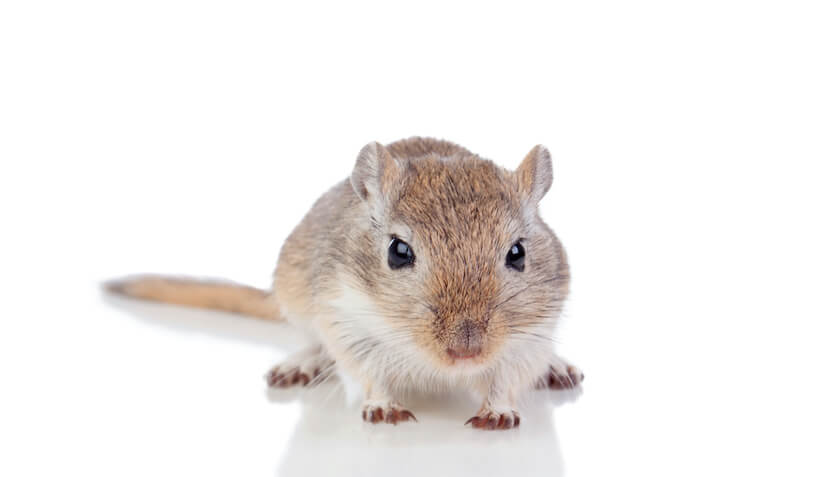
Gerbils share a standard short-hair, coat color of brownish-gray and white undersides. However, selective breeding has created gerbils in different colors and patterns. It’s not unusual to find pet gerbils in solid white, black, creamy-tan, or gray. Some may have spot-like patterns with color variation.
Their wild counterparts may be solid black, gray, blue, silver, white, or blue. Their native habitat often depicts their color because of self-preservative evolution. The most prominent feature that sets a gerbil apart from hamsters is its long tail.
Hamsters come in short or long hair and vary in colors and patterns. The most common coat colors are tan, white, gray, and black. Features such as a stripe along the back, wavy/curly hair, and hairy feet are found in different hamster species. Their eyes can range from black to red, pink, or be two different colors!
Temperament and Behavior
Hamsters are, for the most part, solitary and don’t do well with a cagemate. They don’t particularly like to be held and require appropriate handling (taming.) Handling a new hamster requires patience and an investment of time set aside daily for this activity. Dwarf hamsters are more prone to taking longer to tame and are notorious for jumping out of their owner’s hands.
When you compare handling hamsters to gerbils, there is a difference. The Merck Vet Manual mentions that gerbils are more socially inclined and enjoy the company and companionship of cagemates (of the same gender).
Owners typically don’t have to go through much (if any) handling to tame them. They do require a bit of time to acclimate to a new environment when you first bring one home. As far as an overall mood, male gerbils and male hamsters are far less cranky than females.
The activity level differs between gerbils and hamsters. Hamsters are more laid back and prefer to chill in their cage where they might peek out every now and then to eat or climb on the hamster wheel. They are nocturnal and are more active during the night.
Gerbils, however, are diurnal (active during the day) and are highly playful and active. Female gerbils are more active than males and are considered a bit more “wound up.” When handling female gerbils, they don’t miss the opportunity to jump (and even hop) and take off on you. Male gerbils are more prone to staying with their owner rather than taking off. As far as being affectionate, males come in first place.
Care
Whether you have a hamster or gerbil, both require daily care. Daily spot cleaning in the cage and complete cage cleanings 1-2 times a week are a must.
Dwarf hamsters require careful care because of being small and fragile but also need their owners to be on guard for the development of diabetes (which is very common in Chinese Dwarfs). Dwarf hamsters are not an ideal starter pet or a good pet for small children. For a more rugged hamster species, a Syrian is better suited.
The most common pet gerbil species is the Mongolian gerbil, and it comes with some medical baggage. It is quite common for this species to have epilepsy, according to the Handbook of Clinical Neurology. The severity of seizures plateaus at 6 months of age, but up until then, the severity occurs with increasing frequency. Seizures are brought on by stress and mild environmental factors. Gerbil care, especially for Mongolians, is not for the faint of heart.
The upside of caring for gerbils vs. hamsters is that gerbils are far hardier against diseases than hamsters, according to Basic Anatomy, Husbandry, and Clinical Techniques.
Cage
When it comes to selecting a cage for hamsters, you basically need to ensure it will comfortably house one hamster and add a few accessories (wheel, tubes, nesting box, etc.) Ideally, a hamster should have a minimum of 15” of bedding to burrow into.
Gerbils have a few accommodations that need to be considered when it comes to a cage. Their tiny feet easily get caught in wire bottom cages and in wheels that are not solid. A gerbil requires a cage with a solid floor and accessories that are solid such as ramps and wheels. A perfect option for gerbil cages is a 10-gallon tank that will comfortably accommodate 2 gerbils. A ⅓ bedding depth is best. Gerbils (of the same gender) do well together; after all, they don’t like to be alone.
Just like hamsters, you should never use cedar or pine shavings for bedding because of toxins. Hamsters don’t really need sand baths, but providing them for a gerbil is something they enjoy in the wild and will appreciate you giving to them in captivity.
Not all hamsters are chewers. However, gerbils are. Use caution when putting anything in their cage that can harm them if they chew on it.
Diet
Gerbils and hamsters have a similar diet and do best on a pellet diet. By the way, don’t forget to check out our article on what to feed hamsters (What Can Hamsters Eat?: A Data-Backed Guide To Hamster Feeding.) Treats should be fed in moderation to avoid obesity and diabetes in Chinese Dwarfs especially.
Are Hamsters Or Gerbils More Friendly?
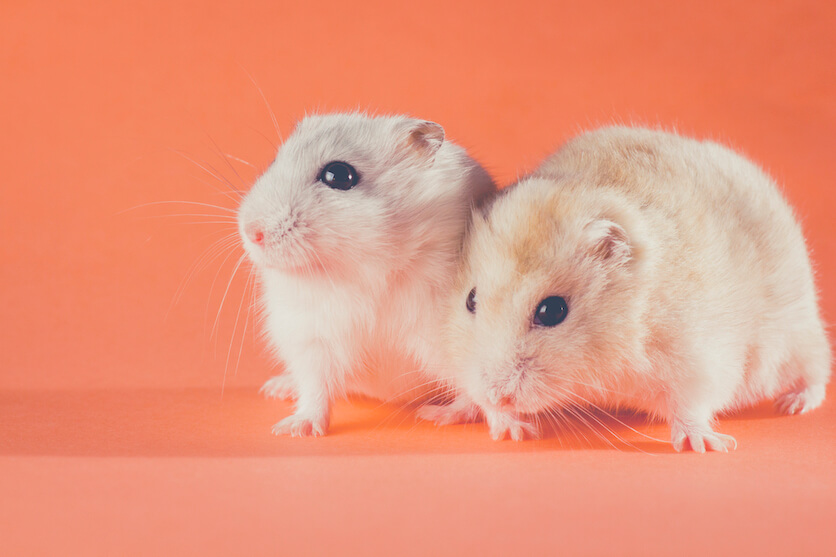
Gerbils seem to be more accepting of human interaction and of one another as cagemates (same-sex). Hamsters make good pets, but honestly, they like human interaction at a minimum. Male gerbils are friendlier than females and likewise in hamsters. Females are on the more moody side.
Do Gerbils Smell More Than Hamsters?
Hamsters and gerbils have scent glands that emit an odor. Both use their scent glands to mark territories. Although male hamsters and gerbils are friendlier, they tend to emit a more pungent odor, according to Gerbil Welfare, because of having larger scent glands.
Do Gerbils Bond With Their Owners Easier Than Hamsters?
Gerbils are friendlier and more willing to accept human interaction compared to hamsters. Male gerbils especially exhibit a quicker bond than females. Hamsters do develop a bond with their owners, but that bond is built on trust and a lot of handling.
How Often Should You Play With Your Gerbil?
Gerbils enjoy human interaction. Daily handling and talking to your gerbil is highly recommended. They are colony rodents that thrive on companionship.
Gerbil Or Hamster: Your Call!
So, which makes a better pet; gerbil vs. hamster? Selecting a pet is something very personal, and any decision made should be made on being well-informed and knowing what you are getting yourself into. A pet, regardless of size, is a huge responsibility for the lifetime of that pet.
